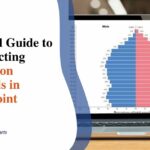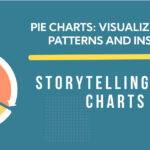From Numbers to Narratives: Creating Impactful Data Stories
Feeling overwhelmed by the intricate maze of numbers and data that don’t seem to make much sense? Trust me, you’re in good company. As a data analyst, I’ve wrestled with this behemoth of raw statistics myself – turning them into relatable, understandable content is indeed no small feat! Allow me to guide you through the fascinating world of data storytelling – an art form that spins numerical facts into captivating tales.
Fasten your seatbelts; we’re about embark on an enlightening journey into creating meaningful narratives from heaps of data!
Key Takeaways
- Data storytelling is the art of turning numbers into relatable and understandable stories that captivate audiences.
- Impactful data storytelling goes beyond charts and graphs to provide context, meaning, and emotions, making data-driven findings more persuasive.
- Techniques for crafting impactful data stories include starting with the end in mind, using colors, sizes, and shapes as emphatic tools, and embracing the art of data storytelling.
The Basics of Data Storytelling
Data storytelling is all about transforming numbers into compelling narratives that captivate audiences and drive impactful results. By building a narrative around data, we can unlock its transformative power and create persuasive stories that resonate with our target audience.
In this section, we will explore the techniques and strategies for crafting impactful data stories that go beyond mere numbers to engage and inspire.
From numbers to narrative
Data can seem cold and hard to understand. But that changes with data storytelling! I turn plain numbers into a story everybody can get. I make the figures important by telling you what they mean.
This way, facts become more than just dull digits. They become stories that spark big ideas and feelings! So, from numbers to narrative is not just making data fun. It’s about making it stick and make sense too!
Impactful data storytelling
Data storytelling has the power to captivate audiences and deliver impactful narratives. By transforming numbers into compelling stories, data storytelling unlocks a world of insights and possibilities.
It goes beyond charts and graphs to provide context and meaning, making data-driven findings more persuasive. The art of data storytelling lies in engaging, informing, and persuading the audience through visualizations that evoke strong emotions.
With voice, body language, and pacing as emphatic tools, a well-staged data story can leave a lasting impression on the audience.
Building a narrative around data
Building a narrative around data is the key to creating impactful data stories. It involves turning numbers and statistics into compelling narratives that captivate audiences. By adding context, giving meaning to the numbers, and presenting them in a visually appealing way through data visualization, we can transform cold and impersonal figures into powerful stories that evoke emotions and deliver useful insights.
Building a narrative around data allows us to engage, inform, and persuade our audience effectively, leaving a lasting impression on them. Data storytelling is an art that unlocks a world of possibilities for conveying information in a compelling and transformative manner.
Techniques for Crafting Impactful Data Stories
Crafting impactful data stories requires starting with the end in mind, using colors, sizes, and shapes as emphatic tools, and embracing the art of data storytelling.
Start with the end in mind
To create impactful data stories, it is important to start with the end in mind. Before diving into the data, think about what you want to achieve with your story. Consider the main message or takeaway that you want your audience to walk away with.
By clarifying your objective from the beginning, you can craft a narrative that effectively communicates and supports your goal. Starting with the end in mind helps ensure that your data story remains focused and impactful throughout its development and presentation.
Use colors, sizes, and shapes as emphatic tools
Colors, sizes, and shapes are powerful tools that can be used to emphasize key points in data storytelling. By using colors strategically, we can highlight important information and draw the audience’s attention to specific data points.
For example, using a bright color for a particular bar on a chart can make it stand out and convey its significance. Similarly, varying the sizes of elements such as icons or text can create visual hierarchy and help communicate the relative importance of different pieces of information.
Shapes can also play a role in conveying meaning; for instance, using arrows or lines to indicate trends or directions in the data. When utilized effectively, these visual elements enhance the impact of data stories by making them more engaging and memorable for the audience.
Embrace the art of data storytelling
Data storytelling is an art that allows us to transform numbers into compelling narratives. It’s about unlocking the hidden stories within the data and presenting them in a way that captivates audiences.
Through data visualization, we can use colors, sizes, and shapes to emphasize key points and evoke powerful emotions. By embracing the techniques of staging, such as voice, body language, and pacing, we can create impactful data stories that leave a lasting impression on our audience.
The goal is to go beyond charts and graphs and deliver useful insights with a clear takeaway. Data storytelling has the power to engage, inform, and persuade others by turning dry data into captivating narratives.
Conclusion
In conclusion, data storytelling is a powerful tool that transforms numbers into captivating narratives. By incorporating techniques such as staging, voice, body language, and pacing, data stories become impactful and memorable.
Data visualization plays a crucial role in this process by turning complex information into compelling visuals. With the art of data storytelling, we can unlock the transformative power of data and create narratives that captivate and inspire audiences.
FAQs
1. What does “From Numbers to Narratives: Creating Impactful Data Stories” mean?
This phrase means making data-driven findings into a story that people can understand easily. CPAs use narrative analytics and storytelling to explain the results of data analysis.
2. Why is it important for CPAs to create impactful data stories?
Creating impactful data stories helps everyone understand what the numbers say. It’s an important part of data communication and makes sense of complex info.
3. How do I make Infographics using my data-driven storytelling skills?
To make infographics, first find your key points from your findings.Then, plan out how you want your story to flow, pick visuals that help tell that story.
4. What is the role of narrative storytelling in data journalism?
In Data Journalism, narrative storytelling tells a clear picture about the findings made by analyzing big sets of facts or numbers.







